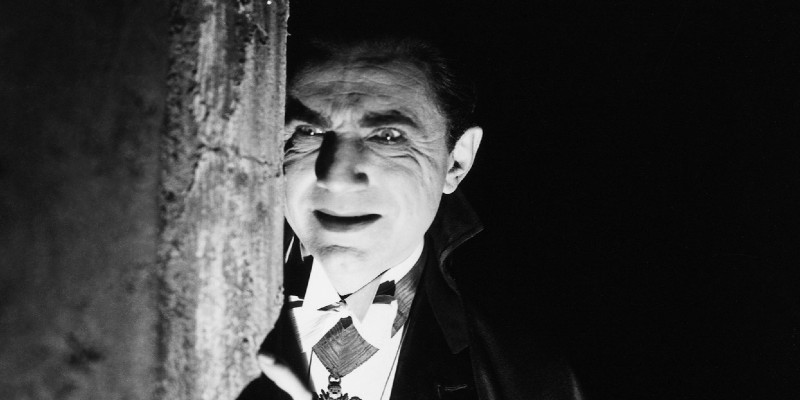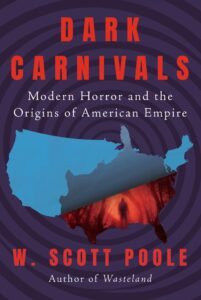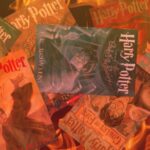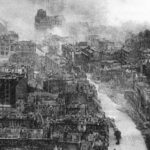W. Scott Poole has one of those jobs slightly warped kids dream of: he’s a professor and expert in modern horror. His new book, Dark Carnivals: Modern Horror and the Origins of American Empire, focuses on the ascension of the classic monsters—vampires, wolfmen, Frankensteins—and about the real monsters we face. His previous book, Wasteland, argued that the Great War greatly influenced our fears and monsters, and Carnivals is both a continuation and a shift from classic monsters to truly nefarious—and often invisible—enemies.
Horror is not my jam, but I’ve read the classics: Bram Stoker’s Dracula, Mary Shelley’s Frankenstein, the entire Twilight trilogy. I am interested in the places where horror incurs into the national imaginary and in its intersections with romance and crime fiction. But for Poole, the current wave of popular horror shows, and films illuminates many of our deepest fears. And that was before COVID.
Lisa Levy: How do the classic monsters—vampire, werewolf, zombie—figure in Dark Carnivals? Have they adapted to the times?
W. Scott Poole: I’m truly infatuated with how monsters from European literary tradition and folklore flourished in the United States. So much of what we think we know about these imaginary creatures comes from the films of this era….Bela Lugosi in Dracula makes it clear for the first time that vampires can turn into bats. Lon Chaney Jr., the lead in The Wolfman, confirms that a silver bullet kills a werewolf. The other (bleaker) side to my love of these films is that they are an example of American soft power through the networks of mass culture, we pushed our monsters on the world in more ways than one. As the book shows, we sometimes see in them an ugly mirror.
Lisa: I know, this one is mandatory but it’s important. Can you speak to the relationship between crime fiction and horror? Any writers you would plug for using elements of both?
Poole: Both crime fiction and horror are obsessed with undisclosed secrets, specifically with either the calamity or the closure of final revelations. There is deep dark at the heart of both since both are interrogating violence and how violence works. So of course, it makes sense that the author of “The Fall of the House of Usher” and the “Ligeia” also invented the detective story. Today we see this in the work of someone like Daniel Kraus, a deeply scary horror writer (co-authored academy-award winning film The Shape of Water and The Living Dead) who wrote one of my favorite entries in the Hard Case Crime series, a nasty little Halloween treat called Blood Sugar. Alma Katsu is an example of someone who intermingles mystery and supernatural horror in books like The Hunger and The Deep (and she can write a damn fine spy yarn too!). Stephen King has long written amazing crime fiction and even some edgy teapot gothic (Misery and Dolores Claiborne really fall into that category). Paul Tremblay, best known for his best-selling horror novels, is also a writer of high-quality crime fiction.
Lisa: Why should crime fiction readers spice up their TBR lists with horror?
Poole: Fans of good crime writing are a philosophical bunch and this is something they tend to share with horror fans. If the layered revelations about human nature and violence you disentwine in a Raymond Chandler tale move you, you’ll find much the same in good horror fiction…and sometimes in bad horror fiction. I don’t think we would have made much of a sharp division of the two genres (or used the idea of “genre”) before the rise of mass commercial publishing and the now pretty imperious demands of brand identification and marketing. Regardless, if you are obsessed with the problem of evil, with the mystery of human malice at least, crime and horror fiction are your chocolate and peanut butter.
Lisa: If the backdrop for Wasteland was the Great War, what is the backdrop for Dark Carnivals?
Poole: In some respects, Dark Carnivals is an unofficial sequel to Wasteland so World War I actually remains the backdrop. But rather than focusing on Europe, we see what happened in American popular culture, and American expansionism abroad, from the early 20th century until about 2020-21 as I finished the book.
Lisa: Why did you focus on film, fiction, and popular performance in Dark Carnivals?
Poole: You could say that I’m making a case in the book for the ties between popular culture and military history, an odd leap but I think readers will find it works. Mass culture in all its forms seems to me to act like something of a cultural dream life. What we find in these books, films and even PC and console games are a set of tropes that are entertaining us, that’s what they are for, but are also constantly interacting with our political beliefs, aspirations, myths…confirming or challenging what we think we know… Lawrence Levine, a historian whose work means a lot to me, called pop culture the “folklore of an industrial society.” Tell us what scares a culture, or what they delight in being scared by, and you see the underside of what people believe about patriotism, the nature of war, and the meaning of violence.
Lisa: Can you define post-horror? Give a few examples that explain what it is and why it has currency?
Scott: I actually reject the term “post-horror” or “elevated horror.” It betrays a misunderstanding of the history of these films. There’s a section early in the book that describes the emergence of this term in the wake of Jordan Peele’s work and the oeuvre of A24 studios. But, as smart film critics have said, it ignores the entire history of the genre. “Art house horror” has been a phenomenon since the Cabinet of Dr. Caligari. George Romero used horror as social criticism starting in the sixties and John Carpenter did the same in the seventies. I think it’s a term that became a way for fans of Ari Aster or Robert Eggers or Peele’s work to vindicate their interest in horror films. What’s interesting about that is that looking on horror films as a once disreputable genre is accurate but it was precisely that lowly status that allowed directors to really open the floodgates of their own imaginations without being stitched up with mainstream expectations.
Lisa: How is Dark Carnivals timely? Did COVID change your process, or deadline, or the general sweep of the book?
Poole: That’s an interesting question because, truthfully, I don’t think it is a timely book. A lot of the focus in non-fiction writing about horror these days is on the anxiety that horror produces or terror on the domestic front. Meanwhile, the disasters of the last seven years in social policy and public health are largely on the minds of writers about politics. So where does Dark Carnivals fit? It’s in part about a story about things having been bad for a long time, that America did not become a scary place for most people, at home or abroad, when Trump was elected President. I think that, in part, this means I’ve written a book that will irritate people across the political spectrum…this is perhaps not a great marketing strategy. For me, as I worked on Monsters in America way back in 2011 and then Wasteland in 2016-18, there was too many links between the horrors of popular culture and the real-world horrors of empire for me to ignore. I hope it’s a book that finds its audience, of course, but that audience may not exist yet. Maybe they need time to assimilate that the dark carnival came to their town a long time ago and they didn’t even notice. We’ll see.


















